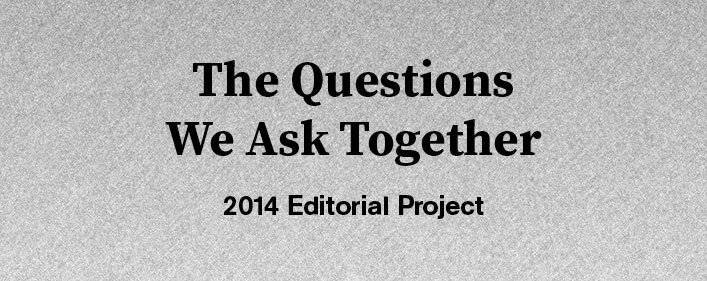Is social practice about inclusion or exclusion? Is it really for everybody?
Artur Zmijewski, Eye for an Eye, 1998
Arising from installation art, social practice has emerged in the past decade as a loosely defined genre that expresses the desire to make art that is living and action-based. Socially engaged art is characterized by its ostensible ability to allow genuine interpersonal human relationships to develop between artists and communities. If this statement is held to be true, then it follows that social practice is also an inclusionary art form, where it could be considered as accessible to everybody, ranging from artists, participants and observers.
In this sense, as an independent curator and scholar focused on the intersections between disability studies and contemporary art, I believe that social practice as an evolving art genre holds much potential for artists with impairments, or for artists who identify as disabled, because it is new and can be molded according to the individual needs of the artist. Social practice is also embedded with an urgency to consider the lived experiences around us as art is called into life. While this type of artistic practice commonly has a performative, discursive and spatial dimension, often taking place outside the traditional white walls of an art gallery or museum, it also possesses a judicial and governmental dimension as well. This is useful for the political cause of the disabled artist’s integration into mainstream contemporary art discourse and life itself. We might begin to think about the myriad forms of social practices that could be transformative for the disabled identity through these interpersonal human relationships, through conference discussions, and so on. Most importantly, the typical lens of artistic analysis––aesthetics––is replaced as a methodology by how a work approaches the social, as opposed to simply what it looks like. This characteristic seems to resonate most profoundly with the notion of complex embodiment, because the disabled artist might be given access to think beyond body politics, in order to focus on larger philosophical and political issues as they pertain to disability.
But ‘access’ is a key word here, because access as it applies to disability is often absent or excluded from the art world, ranging from the lack of ramps to the inappropriate height of a work hanging on a wall for the visibility of a wheelchair user. Historically, other exclusionary practices of the art world, such as who has the power and privilege to participate in certain art genres, have also run rampant, where the voices of marginalized communities have been suppressed. While social practice, which shares many characteristics with other dialogical art movements such as Fluxus, may profess an inclusionary mandate, I wonder if it is really the type of work that only speaks to a selected few within the art world, for those who already have a particularized knowledge regarding its ideologies, acquired by select educational institutions and texts. I caution us to think about the parameters and definitions of social engagement, for no matter the reach or the scope of a particular artist’s ambitions within this realm, they are and must still operate within an art system that is always already flawed, and effected by deeply entrenched power relations.
About the contributor: Amanda Cachia is an independent curator from Sydney, Australia and is currently completing her PhD in Art History, Theory & Criticism at the University of California, San Diego. Her dissertation will focus on the intersection of disability and contemporary art. Cachia completed her second Masters degree in Visual & Critical Studies at the California College of the Arts (CCA) in San Francisco in 2012, and received her first Masters in Creative Curating from Goldsmiths College, University of London in 2001. She held the position Director/Curator of the Dunlop Art Gallery in Regina, Saskatchewan, Canada from 2007-2010, and has curated approximately 30 exhibitions over the last ten years in various cities across the USA, England, Australia and Canada. Her writing has been published in numerous exhibition catalogues, Canadian Art and Art Monthly Australia magazines, and peer-reviewed academic journals such as Canadian Journal of Disability Studies and Disability Studies Quarterly, in addition to forthcoming issues of Journal of Visual Art Practice and The Review of Disability Studies: An International Journal. She has lectured and participated in numerous international and national conferences and related events within the USA, Canada, Australia and Europe, and has served as a panelist for the National Endowment for the Arts (NEA) Art Works grant and Canada Council for the Arts. Cachia is a dwarf activist and has been the Chair of the Dwarf Artists Coalition for the Little People of America (LPA) since 2007. She also serves on the College Art Association’s (CAA) Committee on Diversity Practices (2014-2017). amandacachia.com
